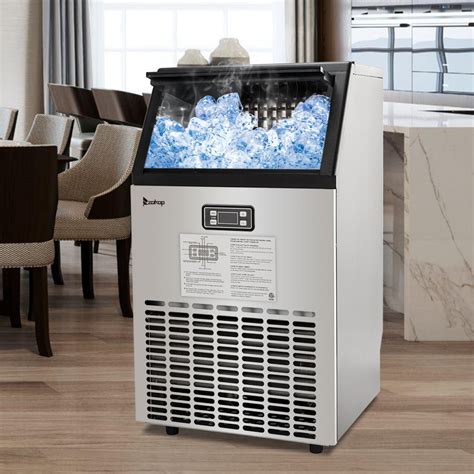The Ultimate Guide to Icemakers: Unlock the Power of Refreshing Hydration

The Ultimate Guide to Icemakers: Unlock the Power of Refreshing Hydration
Icemakers have revolutionized the way we produce and enjoy cold, refreshing ice. From household kitchens to commercial establishments, these versatile appliances have become indispensable for providing a constant supply of ice cubes. This comprehensive guide will delve into the intricacies of icemakers, empowering you to choose the perfect device for your needs.
Types of Icemakers
- Automatic Icemakers: These are the most common type of icemakers found in homes. They automatically produce ice cubes and store them in a built-in bin, delivering fresh ice on demand.
- Built-In Icemakers: These icemakers are seamlessly integrated into refrigerators, offering an elegant and space-saving solution. They draw water directly from the refrigerators water line, ensuring an uninterrupted ice supply.
- Under-Counter Icemakers: Designed for kitchens with limited space, under-counter icemakers can be installed beneath countertops, providing a discreet and convenient way to make ice.
- Commercial Icemakers: Catering to high-volume ice production, commercial icemakers are designed to produce large quantities of ice for restaurants, hotels, and other businesses.
How Icemakers Work
The operation of an icemaker is a fascinating process:
- Water Supply: Icemakers require a constant supply of water, which is typically drawn from a water line connected to the refrigerator or a municipal water system.
- Freezing Cycle: Water is fed into an evaporator, where it comes into contact with cold refrigerant coils. As the water freezes, it forms ice cubes.
- Ejection: Once the ice cubes are formed, they are ejected from the evaporator using a mechanical arm or an auger.
- Storage: The ice cubes are then stored in a built-in bin, ready to be dispensed as needed.
Icemaker Capacity
The capacity of an icemaker is measured in pounds of ice produced per day. A typical household icemaker can produce between 5 to 15 pounds of ice per day, while commercial icemakers can produce hundreds of pounds.
Energy Efficiency
Energy efficiency is a critical consideration when choosing an icemaker. According to the Energy Star program, the average energy use for a household icemaker is about 200 kilowatt-hours per year. Look for icemakers with Energy Star certification to minimize energy consumption.
Icemaker Maintenance
Regular maintenance is essential to ensure optimal performance of your icemaker:
- Cleaning: Clean the icemaker periodically using a mild cleaning solution. This will remove any mineral buildup or other contaminants.
- Water Filter: Many icemakers have built-in water filters. Regularly replace the filter to ensure the ice is clean and free of impurities.
- Defrost: Most icemakers require periodic defrosting to prevent ice buildup. Follow the manufacturers instructions on how to defrost the icemaker.
Interesting Story Cases
To illustrate the impact of icemakers, lets explore a few intriguing stories:
- In a remote village in India, the introduction of a solar-powered icemaker transformed the lives of the villagers. Access to clean ice enabled them to preserve food, improve sanitation, and generate income from the sale of ice.
- A renowned chef in a Michelin-starred restaurant credits his innovative ice sculptures to the precision of his commercial icemaker. The crystal-clear ice allowed him to create intricate designs that wowed his patrons.
- A group of friends embarking on a camping trip discovered that their icemaker had malfunctioned, leaving them without a crucial ingredient for their refreshing cocktails. With a dash of humor, they replaced the ice with frozen peas, creating an unexpectedly delightful and memorable drink.
Benefits of Using Icemakers
Icemakers offer numerous benefits:
- Convenience: Icemakers provide a convenient and effortless way to produce ice, eliminating the need for manual freezing and refilling of ice trays.
- Improved Hydration: Chilled water and beverages aid in hydration, which is essential for overall health and well-being.
- Food Preservation: Ice is indispensable for preserving food and beverages, extending their shelf life and maintaining their freshness.
- Culinary Versatility: Ice is used in a wide range of culinary applications, from cooling cocktails to crafting frozen desserts.
- Medical Applications: Ice is used for therapeutic purposes, such as reducing pain and inflammation.
Conclusion
Icemakers have revolutionized the production and enjoyment of ice, becoming an indispensable appliance in households and commercial establishments alike. By understanding the types, operation, and maintenance of icemakers, you can make an informed decision to choose the perfect device for your needs. Embracing the convenience and benefits of icemakers will unlock a world of refreshing hydration, culinary creativity, and improved well-being. Invest in a quality icemaker today and elevate your daily life with the power of pure and refreshing ice.
